Heavy Monsoon Attaceked Rawana Ella Waterfall in Sri Lanka
Rawana ella water fall with a heavy flow of water due to heavy rain last couple of months. Impressive Waterfall but apparently can be dangerous. How the water level of Rawana Ella falls gradually accelerates with suddenly Change heavy rain. then rapidly changed within a few minutes time. The heavy rains experienced in the Uva Province had given the beautiful Ravana Falls a new colour mixed with muddy water. The pictures show how the waterfall looked on Sunday with crystal clear water and on Monday with muddy water. April and September are the best to see the whole country, while the inter-monsoonal season in October and November sees fine weather for most of the island interspersed with sudden thunderstorms. If you’re prepared for sudden bursts of rain, it’s still a good time of year to travel and to enjoy. Low season is May to August when the Yala Monsoon hits, but it’s still a reasonable time to visit the North and East. In general when it does rain, it’s unusual for the rain to last all day, with downpours tending to be short and sharp, often with a number of inches falling in just a matter of minutes. In extreme cases this can lead to localised flooding, which when severe can require last minute alterations to your travel plans... one of the highlights of travelling in Asia!
The Best Time to Visit Ella, Sri Lanka
The busiest month for tourism in Ella, Sri Lanka is July, followed by August and January. Prices for hotels and flights will be most expensive during these months, though you can save if you purchase well in advance. Tourists are unlikely to visit Ella in March. Those willing to visit at these times will likely find it the least expensive month.
Ravana Falls Green Retreat Sri Lanka
Ravana Ella Falls is definitely worth a stop and explore the waterfalls, surrounding landscape and check out the views. This is a very beautiful waterfall, easily accessed by the roadside, which is convenient, but also makes it a bathing spot for locals and travelers alike.
Ravana Falls (popularly known as Ravana Ella in Sinhala) is a popular sightseeing attraction in Sri Lanka. It currently ranks as one of the widest falls in the country. This waterfall measures approximately 25 m (82 ft) in height and cascades from an oval-shaped concave rock outcrop. During the local wet season, the waterfall turns into what is said to resemble an areca flower with withering petals. But this is not the case in the dry season, where the flow of water reduces dramatically. The falls form part of the Ravana Ella Wildlife Sanctuary, and is located 6 km (3.7 mi) away from the local railway station at Ella.
Ravana Falls Green Retreat Sri Lanka
The falls have been named after the legendary king Ravana, which is connected to the famous Indian epic, the Ramayana. According to legend, it is said that Ravana (who was the king of Sri Lanka at the time) had kidnapped princess Sita, and had hidden her in the caves behind this waterfall, now simply known as the Ravana Ella Cave. The reason for the kidnapping is said to be a revenge for slicing off the nose of his sister by Rama (husband of Sita) and his brother Laxmana. At the time, the cave was surrounded with thick forests in the midst of wilderness. It is also believed that Rama’s queen bathed in a pool that accumulated the water falling from this waterfall. They believed that Ravana has played the Ravanahatha over here.
Ravana Ella Wildlife Sanctuary
Into the heart of the island, the road climbs higher and higher and the mountainous vistas turn into picture postcard perfect. The long and winding roads continue through lush tea fields and bustling villages. At times, the precipitous mountain sides can be daunting and we keep our eyes firmly on the road ahead. Many a time, we stop by the side of the road to gaze at the surrounding sights that take our breath away. This time, we are on our way to Kaloogala, located off Hindagala Estate in the Uva Province. We are almost 234 kms from Colombo.
Steeped in folklore, these falls have been named after the legendary character from the Ramayana, Ravana, the demon King of Lanka, who imprisoned Rama’s wife Sita in the rock cave behind the waterfall. The Falls is a part of the Ravana Ella Wildlife Sanctuary. Later excavations have revealed human skeletons belonging to the Balangoda man (Homo Sapiens Balangodensis) and tools dating from 8000 – 2500 B.C.
-
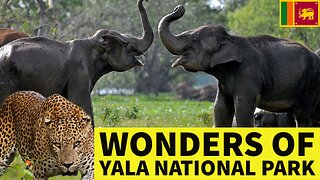 11:12
11:12
travelwithtad
11 months agoYala National Park Sri Lanka | The Most Incredible Sri Lanka Travel Experience
242 -
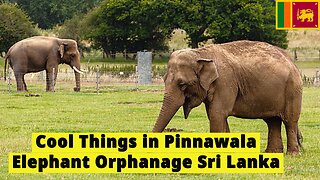 9:21
9:21
travelwithtad
11 months agoAmazing Pinnawala Elephant Orphanage Sri Lanka Travel
18 -
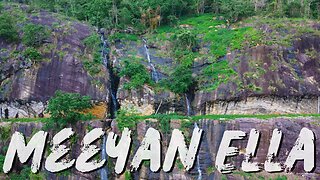 1:20
1:20
Zeloan
1 year agoMeeyan Ella Falls Sri Lanka | Ihalakotte | Waterfall | Travel | Adventure Hike | | Visit Sri Lanka
8 -
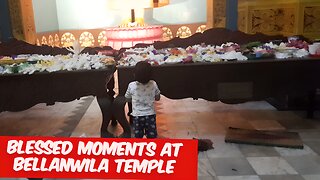 6:48
6:48
Mr
10 months agoTravel Sri Lanka Blessed Moments at Bellanwila Temple
38 -
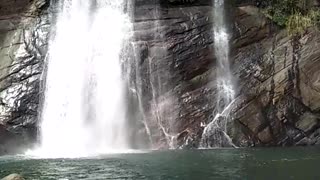 0:20
0:20
BrowenEye
3 years agoWaterfall in Sri Lanka
10 -
 11:53
11:53
travelwithtad
1 year agoWeekly Vlog: Discover Sri Lanka's Top 10 Secret Destinations: Hidden Gems You Can't Miss!
2582 -
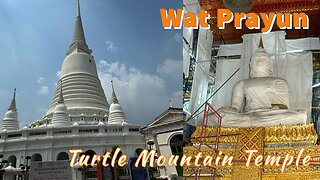 17:54
17:54
Endless Journey
3 months agoWat Prayun - “Turtle Mountain Temple” - Second Class Royal Temple - Bangkok Thailand 2024
6 -
 9:38
9:38
Mr
11 months agoSri Lanka Travel Day Outing - You Won't Believe What Happened?
209 -
 14:28
14:28
travelwithtad
1 year agoUnveiling a Sri Lankan Adventure! What Will We Discover in Hikkaduwa?
39 -
 6:03
6:03
The Thailand Travel Channel
3 years ago $0.04 earnedThailand Travel, EPIC Mountain Wind Farm Paradise!
5431